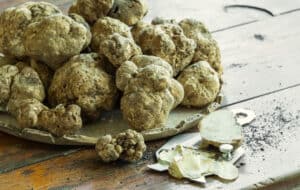Standing on top of a hill in southern Tuscany, Montepulciano is a medieval town of unique beauty.

The town is surrounded by walls and fortifications designed by Antonio da Sangallo the Elder in 1511 for Cosimo I, Grand Duke of Tuscany. The city, full of elegant Renaissance palaces, ancient churches, charming squares, and hidden corners, features wonderful views of the Val d’Orcia and Val di Chiana valleys that surround it. A walk through Montepulciano is the best way to enjoy it.
At the bottom of the hill, there is the stunning Madonna di San Biagio Sanctuary, a typical 16th century Tuscan church with a circular (central) plan. Piazza Grande is the ideal and monumental heart of Montepulciano. It is one of the most beautiful squares of the minor towns of Tuscany, bordered by important buildings: the Cathedral with its unfinished facade and the Bell Tower dating back to the second half of the 15th century is also unfinished.
Piazza Grande is also the setting for Montepulciano’s main events, including the barrel racing Bravìo delle Botti contest held in August since 1974. The competition replaces an equivalent horserace dating back to 1373. Teams of two runners representing the eight districts of the town compete to be the first to roll an 80-kg wine barrel through the streets of the historic center up to the square. Literally up because almost the entire race is uphill. Since the streets are very narrow and the barrels are big and heavy not to mention the fact that the rivalry among districts goes very deep, intentional collisions are pretty frequent!
Vino Nobile

Beside its incredible beauty, the town is famous all over the world for its Vino Nobile di Montepulciano (and Rosso di Montepulciano as well). The origin of this wine is strictly related to the territory and the history of the town itself, as you can easily tell just strolling in the city. Wineries are inside the city walls, integrated into the old town center, carved into the stone on which the city itself was built (De Ricci and Talosa are two excellent examples).
Many documents and articles about the history of the town show that in 1350 terms and conditions for trade and the exportation of wines from Montepulciano had already been established. In the second half of the 18th century the term “noble” was associated with this wine to underline its excellent quality and the idea that it should be served on the tables of the nobility. The quality of this wine has improved a lot in these last years along with the number of producers. The king of grapes, as it is all over Tuscany, is Sangiovese, of course. Here it is called ‘prugnolo gentile’ (literally ‘gentle blackthorn’).
Villa e Giardini della Foce
If you happen to be in this area, you shouldn’t miss these extraordinary gardens. The Villa was built in the late 15th century as a hostel for pilgrims and merchants travelling on the Via Francigena leading to Rome. Because of two wars and pestilence, the property ran into extreme poverty and was abandoned until 1924 when it was bought by Antonio and Iris Origo.
They farmed and developed the land, bringing welfare and social progress to the farmers and the whole area. They soon engaged the English architect Cecil Pinsent to restore the main buildings and create a huge garden, conceived to improve and adorn the Renaissance house and expand the spectacular view over the valley of the Orcia and the Amiata mountain. The harmony among buildings, gardens, and nature makes La Foce a perfect example of Tuscany’s architectural and cultural evolution in the XXth century.






